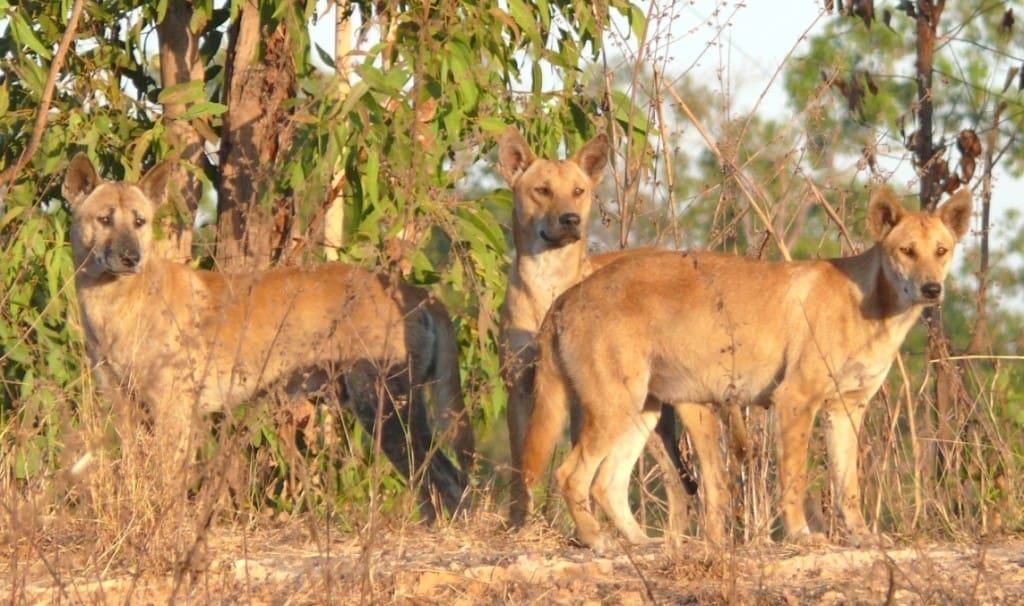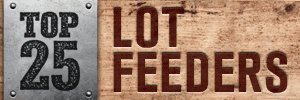 RE-INTRODUCING dingoes into Victoria’s Grampians National Park or Garriwerd region to manage fox and cat numbers is a “completely flawed” idea, according to National Wild Dog Management co-ordinator Greg Mifsud.
RE-INTRODUCING dingoes into Victoria’s Grampians National Park or Garriwerd region to manage fox and cat numbers is a “completely flawed” idea, according to National Wild Dog Management co-ordinator Greg Mifsud.
Western Victorian sheep and beef producers have less than two weeks to respond to proposals to investigate the re-introduction of dingoes or dingo-hybrids in the Grampians National Park.
Plans to investigate the re-introduction of dingoes or dingo-hybrids are outlined in The Greater Gariwerd Landscape Draft Management Plan, for which community feedback ends on 24 January.
Parks Victoria has produced an online survey about the draft plan and written submissions can be emailed to [email protected] or to Manager Park Planning, Parks Victoria, Level 10, 535 Bourke Street Melbourne VIC 3000.
The Crawford family at Victoria Valley is also distributing an online and physical petition opposing the proposals. Click here and search for ‘dingoes Grampians’ to view the online change.org petition.
Mr Mifsud said the cultural significance of re-introducing dingoes was a different matter, but he believed the scientific merit of use the dingo to manage foxes and cats was “completely flawed” based on current long-term research and observations nationally.
“If their intention is to put dingoes back into the Grampians in order to assist with conservation of threatened species, then it is extremely counter-productive considering dingoes are known to be generalist predators and the majority of species they are looking to conserve fall right smack bang in the middle of the size range that these generalist predators feed on.
“In actual fact all you are doing is compounding the predation pressure on the native fauna within the Grampians by adding another introduced predator to the system.”
Mr Mifsud said he didn’t believe the current fox and cat control programs in the Grampians were being delivered to the scale to achieve “a knockdown.”
“We have options to reduce fox and cat numbers if they applied them at the appropriate scale and density.
“Dingoes are not the answer.”
Mr Mifsud said the assessed risk of dingoes to threatened fauna is as high, if not higher, than foxes or cats.
“So putting them (dingoes) back in there is just going to be completely counter-productive.”
Mr Mifsud quoted a 2012 study with results that imply that dingoes present similar levels of direct risk to threatened species as foxes and feral cats. The researchers also “strongly caution against the use of dingoes as a biodiversity conservation tool outside of an adaptive-management framework that addresses all the causes of species declines.”
Mr Mifsud is extremely concerned about the impact that dingo hybrids will have on sheep properties adjoining the Grampians National Park and on sheep producers across the state.
“Dingoes are highly mobile, and we know from research they will not stay within the confines of the park. If they do escape, they could spread across the state using uncleared forest on private and public lands coming from the Grampians with devastating impacts for livestock producers across the region and the state.”
Merino breeder says dingo proposal is “stupidity at the utmost”
Victoria Valley Merino breeders John and Rhonda Crawford said their petition opposing the re-introduction of dingoes has received about 1600 signatures up to about 1pm today.
Mr Crawford said the proposal to re-introduce dingoes into the park was “stupidity at the utmost, very ill thought out, not properly researched” and lacked communication with the local community.
“It will devastate our sheep industry.”
He said dingoes in the park would represent a threat to tourist visitors to the area and suggested some dogs be fenced in a small area for tourists.
And you can forget about compensation, that’s not going to happen, and the dingoes are not going to stay in the park.”
Mr Crawford said livestock producers in south-east South Australian were also concerned about the likelihood of dogs moving across the SA-Victorian border.
Call to attend Parks Victoria draft plan forums
Mrs Crawford said she started the survey to increase community awareness and urged people to go to Parks Victoria community sessions at Wartook tonight and Dunkeld tomorrow. These are being held tonight at the Laharum Community Hall, Northern Grampians Road, Wartook, from 5-7pm; at the Sterling Place Community Centre, 14 Sterling Place, Dunkeld, Thursday 14 January, 5-7pm, and at the Parks Victoria Halls Gap office, Mural Room, Grampians Road, Halls Gap, Friday, 15 January, from 10am-noon.
The draft plan has been prepared by Parks Victoria, Barengi Gadjin Land Council, Eastern Maar Aboriginal Corporation, and the Gunditj Mirring Traditional Owners Aboriginal Corporation.
Under the goal of restoring key species in the landscape, the draft plan refers to the establishment of priority habitats, including relevant Special Protection Areas, managed to support the re-introduction and recovery of key fauna.
A strategy listed in the plan with a medium priority level is: “In collaboration with Traditional Owners, investigate the re-introduction of Dingo, Eastern Quoll, Spot-tailed Quoll, Southern Bettong, Eastern Barred Bandicoot and other threatened or culturally significant wildlife. This would include development of specific Conservation Action Plans to evaluate and implement any proposal (including the benefit to cultural renewal, revitalising knowledge and contributing to threatened species management), the plan says.
Under the goal of reducing predation by foxes and cats, the plan also proposes the establishment of innovative research partnerships between farmers and academic institutions to investigate and trial native predator re-introduction (quoll and Dingo) to restore missing ecological processes, control pest species (rabbits, fox, feral cat) and naturally manage overabundant macropods (kangaroo and wallaby).
The draft plan document recognises that “the re-establishment of Dingo or Dingo-hybrid populations in the Greater Gariwerd Landscape has the potential to cause community concerns due to possible conflicts with grazing.” Programs for the re-introduction of Dingoes have also been raised by other Traditional Owner groups in other parts of Victoria and are being investigated, the plan says.
VFF concern about escalated wild dog cost risk
The Victorian Farmers Federation (VFF) and the National Wild Dog Action Plan (NWDAP) are concerned about the proposal to reintroduce dingoes into the Grampians National Park and say the risks to nearby livestock and already threatened fauna are far too great.
VFF Livestock councillor Peter Star said while the VFF respects the cultural views and values of the traditional land owners, reintroducing dingoes without a robust plan to protect local communities, livestock and vulnerable native species from attack will end in disaster.
“Wild dogs cost the Victorian livestock industry about $18 million every year and there are many farmers around the Wartook and Victoria Valleys who are deeply concerned this proposal is aspirational, rather than practical,” he said.
Mr Star said radio-collaring research in similar terrain has shown dingoes and wild dogs are highly mobile and can regularly roam up to 60km2 from bushland and out into farm land.
“We need to know exactly how the dingoes would be kept within the Grampians National Park,” he said.
“If that solution is a fence, how secure will it be, who will patrol it and who’s going to pay for it? Farmers must not be forced to bear this added cost.”
While Biodiversity 2037 has an aspirational aim of introduction of dingoes, it also strongly states that pest plants and animals are a key threat to biodiversity and threatened species.
The VFF has called for the government to properly fund pest plant and animal programs on crown land, and resource the CMAs to co-ordinate programs that cost our economy a billion-dollars per annum and are a key threat to biodiversity.
Click here to read the draft plan, complete the Parks Victoria survey and view a recent webinar.



I am absolutely appalled at the proposal to allow dingoes free use of the Grampians. This is adjacent to some of the most productive sheep country in Australia. Do you want to shut down the wool industry?
I am absolutely appalled that the breeding and release of dingoes could even be considered when we know the horrendous agony and death that these carnivorous dingoes inflict on their victims. It is not their fault, they have to survive, but we certainly don’t want to breed more of them and certainly don’t want to release them. Whoever is responsible for this idea should be made to watch the dreadful maiming and death that their plan would cause. They need to see the animal victims, still alive, ripped to pieces, blinded, blood dripping from their bodies and in agony.
As far as this so-called tradition, we have to move on. There is no place for tradition when it causes agonising suffering to animals.
Breeding and releasing dingoes is a cruel and idiotic idea.
I have seen sheep that have been mauled by dingoes. I have seen them completely flayed alive, lying skinned alive, unable to move and moaning in agony. I have had my husband shoot them. I have seen sheep that have obviously been lying there skinned alive for days, because they were already being eaten by maggots and ants. I have seen ewes still alive with their faces ripped off by dingoes from trying to defend their lambs.
How dare anyone try to tell me that a compensation scheme for farmers whose livestock is savaged by dingoes makes this alright. Sheep are not “stock”. They are sentient beings who suffer.
It is appalling that we should be releasing introduced dingoes deliberately to savage and maul native kangaroos, our Australian icon. It is no better than “live coursing” in the greyhound racing industry.
Dingoes are no more native to Australia than cats, foxes, rabbits and rodents. They were introduced from South East Asia around 4ooo years ago.
According to the Department of Agriculture and Fisheries Biosecurity Queensland Fact sheet March 2015 page 2, cats have been here at least 5 or 6 centuries, at least 300 years before the damage to wildlife they are blamed for occurred.
Cats also help to control other introduced animals such as mice, rats, pigeons and especially rabbits, but that does not mean we should be breeding and releasing more of them, any more than we should be breeding and releasing dingoes, or any other animal.
I pity Victorians with their government infiltrated by lefties. With all the Woke folk spouting endlessly nutty ideas, it just gets worse…
A lot of comments from people who haven’t read scientific studies on dingoes. “Cane toad idea”? Considering they’re native, they actually help the environment, unlike a lot of farmers who don’t even control weeds on your own properties, even though they’re legally obliged to.
Dingoes/dogs can travel long distances. So unless they plan the fence off the Grampians, they are introducing them to the whole environment.
If the scientific basis is to return things back to the natural balance, this is impossible now that humans have introduced so many changes.
Don’t be so bloody stupid. One dingo can kill and maim dozens of sheep in a night. A pack can kill in the hundreds. Victoria’s national parks had better be prepared to fork out millions of dollars in compensation per year as the buck will stop with them.
What idiot dreamed up this dingo scheme? Really, surely this is a joke?
Who in their right mind could think releasing dingoes into the Grampians would be a good idea?
It’s another cane toad disaster waiting to happen.